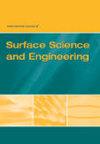Evaluation of effective models of offset CTP plate aluminium oxide surface roughness characterisation
IF 1.2
4区 工程技术
Q4 ENGINEERING, MECHANICAL
International Journal of Surface Science and Engineering
Pub Date : 2017-11-26
DOI:10.1504/IJSURFSE.2017.10009269
引用次数: 1
Abstract
In this study, three different approaches for characterisation of printing plate's non-printing elements surface structure and roughness were compared: stylus profilometric method, AFM, method and software (indirect), SEM image-based profilometry. The comparison was made to evaluate the possibility of utilising the different methods for characterisation of CTP offset printing plate surface roughness. The direct profilometric measurements involved the use of stylus profilometer visual analysis were made using AFM device and for the indirect approach, the Gwyddion software, for analysis of single and stereo SEM images and calculation of standard profilometric parameters, was used. The results of this study demonstrate that it is possible to obtain profilometric parameters from the analysis of AFM and SEM micrographs with appropriately calibrated grey scale intensity distribution and that the values of the parameters are comparable to those obtained by contact stylus profilometry. The results of this comparative study indicate that profilometric 2D direct stylus method is more applicable when larger areas tend to be measured, while the indirect image-based 3D profilometry is a valuable and efficient tool for characterisation of various surface's topographies on micron scale sample areas.胶印CTP版材氧化铝表面粗糙度表征的有效模型评价
在本研究中,比较了表征印版非印刷元件表面结构和粗糙度的三种不同方法:触针轮廓测量法、AFM、方法和软件(间接)、基于SEM图像的轮廓测量法。进行比较是为了评估使用不同方法表征CTP胶印版表面粗糙度的可能性。包括使用触针式轮廓仪的直接轮廓测量使用AFM设备进行视觉分析,对于间接方法,使用Gwydion软件分析单个和立体SEM图像并计算标准轮廓测量参数。该研究的结果表明,通过对AFM和SEM显微照片的分析,可以获得具有适当校准的灰度强度分布的轮廓测量参数,并且这些参数的值与接触笔轮廓测量法获得的值相当。这项比较研究的结果表明,当倾向于测量更大的区域时,轮廓测量2D直接触针法更适用,而基于间接图像的3D轮廓测量是表征微米级样品区域上各种表面形貌的一种有价值且有效的工具。
本文章由计算机程序翻译,如有差异,请以英文原文为准。
求助全文
约1分钟内获得全文
求助全文
来源期刊
CiteScore
1.60
自引率
25.00%
发文量
21
审稿时长
>12 weeks
期刊介绍:
IJSurfSE publishes refereed quality papers in the broad field of surface science and engineering including tribology, but with a special emphasis on the research and development in friction, wear, coatings and surface modification processes such as surface treatment, cladding, machining, polishing and grinding, across multiple scales from nanoscopic to macroscopic dimensions. High-integrity and high-performance surfaces of components have become a central research area in the professional community whose aim is to develop highly reliable ultra-precision devices.

 求助内容:
求助内容: 应助结果提醒方式:
应助结果提醒方式:


